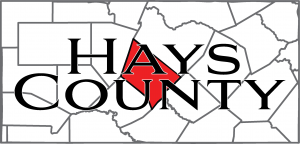By Paige Lambert
Central Texas is known for its beautiful landscapes and challenging hiking trails. Families may soon have the chance to traverse 30 miles of hill country, parks and cities.
The Violet Crown Trail will stretch 30 miles from Zilker Park to near Onion Creek in Hays County. Different sections of the trail will be open to mountain bikes, hiking, running and possibly horseback riding.
“This is the first trail of its size in Central Texas,” said Butch Smith, the trail project manager of Hill Country Conservancy, a nonprofit land conservation group.
Smith said the regional trail idea sparked when Austin began obtaining parkland in close proximity to each other.
“It was an opportunistic idea to really get people out on the land especially the water quality protection lands, which aren’t open to the public,” Smith said. “So the idea was to get people to support the acquisition of the land, get out and enjoy the land.”
The project began in 2010 when a master plan was formulated and accepted by the city of Austin and city of Sunset Valley, the two municipalities which own the projected trail land.
The master plan called for a three-phase project, determined by the type of landscape the projected trail traversed.
Since then multiple entities have conducted environmental surveys and fundraising campaigns.
According to Smith, the city of Austin has raised around $2.3 million, Austin Parks and Recreation $1 million and Hill Country Conservancy $500,000 to date.
Some of the money will be used to begin construction on phases one and two in 2015, he said.
Phase one will weave through Zilker Park and the Barton Creek Green Belt, connecting around 100 miles of trails, Smith said.
The six-mile trail will be constructed for mountain biking until it reaches Sunset Valley, transforming in to an urban trail.
The seven-mile section, or phase two, will run from Sunset Valley to the Lady Bird Johnson Wildflower Center.
Smith said the handicap-accessible trail will be a 10-feet wide, hard packed granite surface. It will run past shopping centers, schools and neighborhoods, he said
“It will allow alternative transportation from an area, recreation and have added health purposes, to encourage people to get out and exercise,” Smith said. “All these things factor in to make it a really holistic picture for the benefit of the trail system.”
As phases one and two are constructed, plans will begin for the 17-mile section that will run through Hays County.
Phase three, 17 miles long, will run through Austin water quality protection lands, with trailheads every five miles. Each trailhead will have parking, restrooms and educational signs.
The six-foot wide dirt trail will be useable for mountain bikers, equestrians and hikers. Smith said it would be similar to a state park trail, keeping with the landscape.
“It’ll have switchbacks and be a little more rugged,” Smith said. “When you follow the contours of the land, it’s easier to avoid erosion and other conservation issues.”
Phase three will end in a two-mile loop near Onion Creek. Smith said the completion date for phase three is still undecided, since more environmental surveys have to be conducted.
The surveys will look for critical environment features, like caves, springs and wetlands, said Willie Conrad, wild lands division manager of Austin Water Utility, which zones the phase three lands.
Obtaining permits could take even longer, since the projected SH 45 intersects the current trail plan.
“The trail isn’t set in stone,” Smith said. “We’ll have to see what happens with the surveys and SH 45.”
Even though this project is four years in the making, Smith said most regional trail projects take 9-10 years.
“If you look around the country at similar regional trail projects, it’s very much in keeping with the same time frame,” Smith said.
The trail route in Hays County is owned by the city of Austin, and will be funded mainly by the Hill Country Conservancy, Smith said.
Nevertheless, the completed trail will benefit residents in both counties, Smith said.
“A lot of the lands that are protected for water quality were former ranches,” Smith said. “People in urban environments still have an opportunity to get out and walk on lands that constitute the history of Central Texas.”





